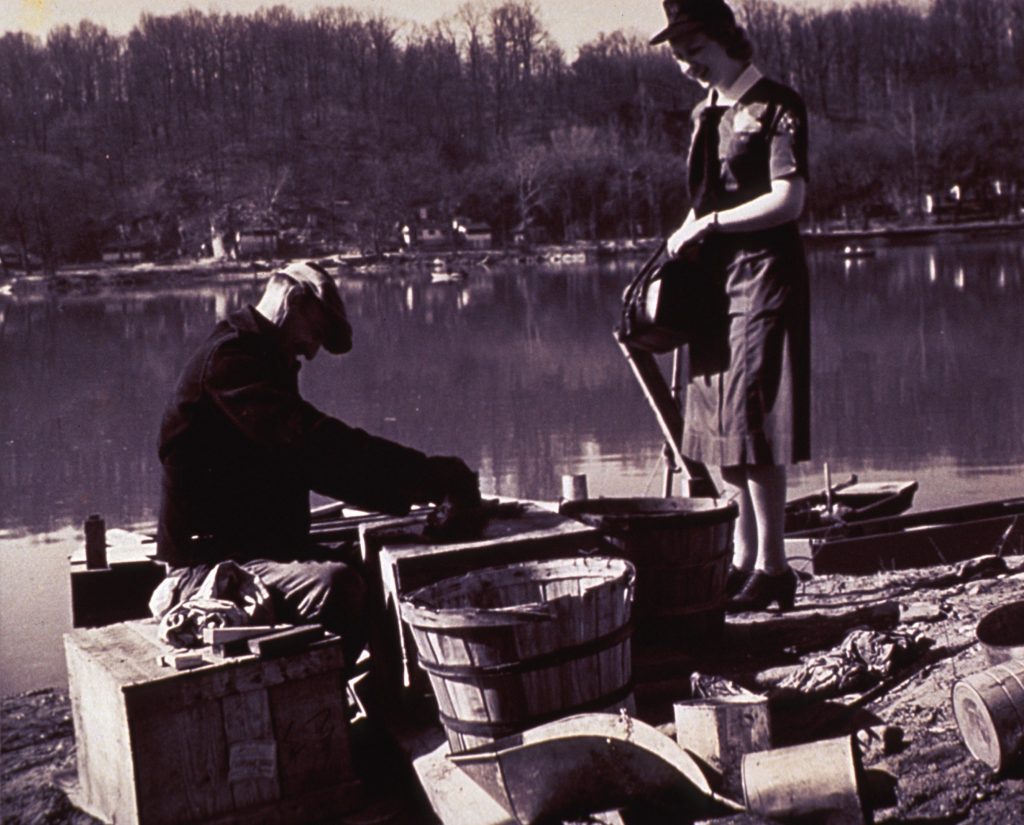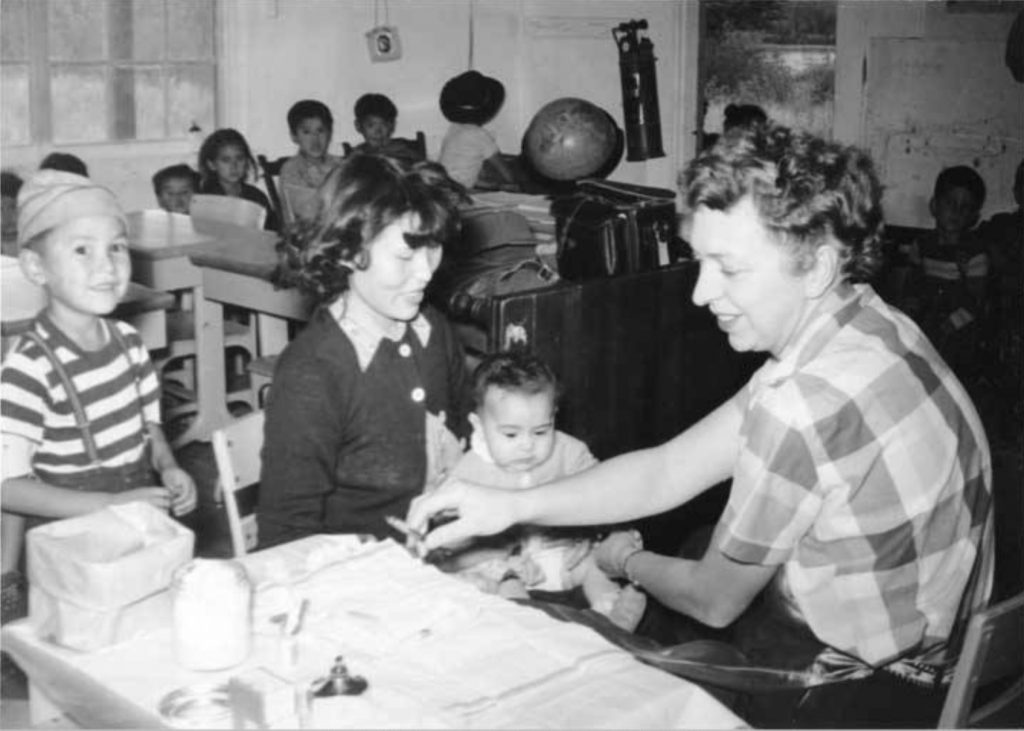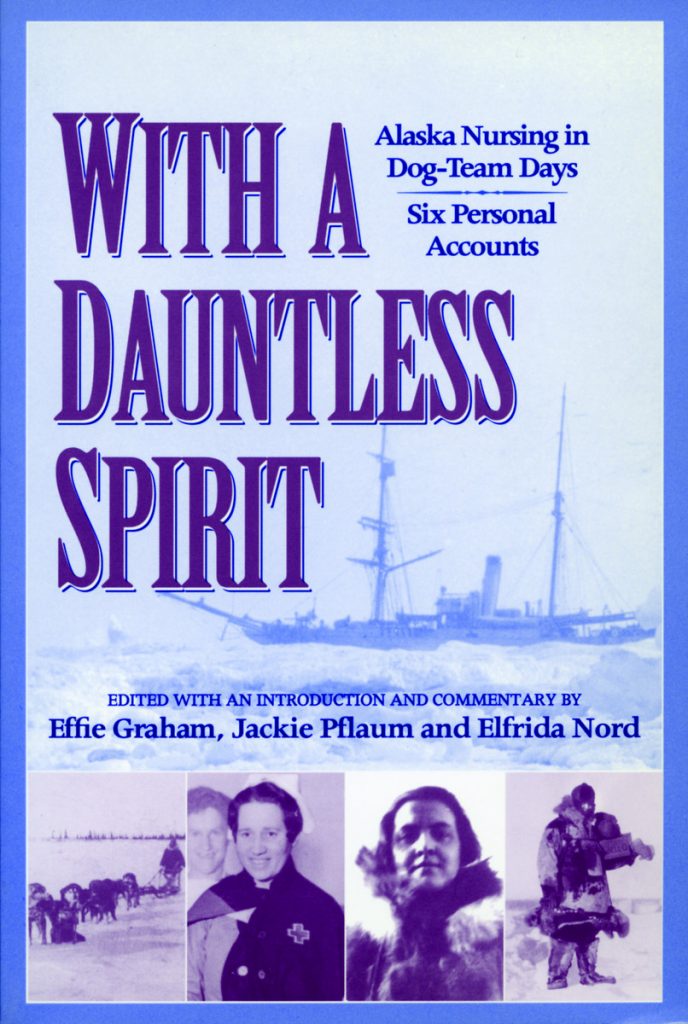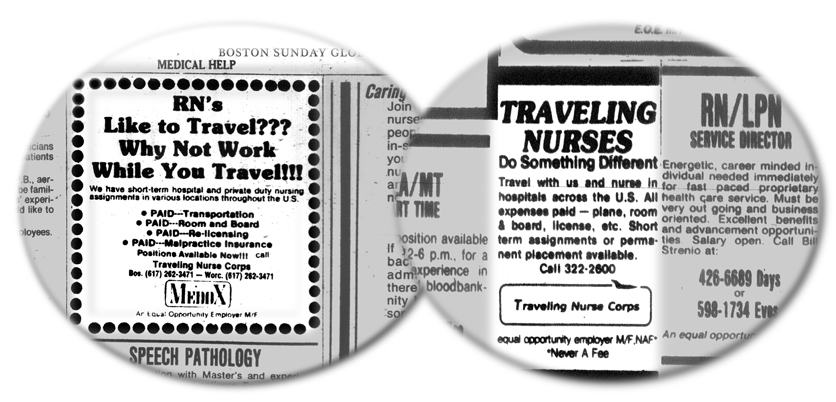When did travel nursing begin? The story goes back much further than you might think. Travel nurses used to be real adventurers! If you’re a travel nurse now, we’re guessing you’re not trekking through the wilderness by dog-team or bush plane anymore… but you’re part of a fascinating history and a venerable tradition of brave public health nurses and wandering health professionals.
Many people assume travel nursing started during the nursing shortage of the late 1970s. After all the first travel nurse agency, Traveling Nurse Corps, was created in 1978 by Bruce Male in Boston. But just as the origins of the nursing shortage actually go back to the early 20th century, the history of travel nursing also started much earlier, with traveling public health nurses.

1917: “Traveling nurses have already saved babies”
In 1917, Julia Lathrop, the first director of the Federal Children’s Bureau, proposed creating a federal public health program to improve and promote prenatal and infant health and hygiene that would employ traveling nurses:
The Children’s Year campaign has brought to many communities a new recognition of their need of traveling nurses and in some cases funds to employ these nurses have been raised, but no nurses are to be had… An illustration of how traveling nurses have already saved babies is found in the fact that the death rate of infants from one month to one year is steadily decreasing.
Lathrop’s proposals and advocacy for children’s health initiatives eventually resulted in Congress passing the 1921 Sheppard-Towner Maternity and Infancy Protection Act which helped fund “over three million home visits by traveling nurses.”
Some of the earliest travel nurses in the U.S. worked in government public health programs targeting tuberculosis, typhus fever, influenza, measles and other public health issues in Native American communities. In a 1920 annual report by the Commissioner of Indian Affairs to the Secretary of the Interior, the agency reported having a health service staff that included “approximately 100 stationed nurses” and “6 traveling nurses.” Even back then, there was a shortage of nurses as the report also noted that “it has not been practicable to fill all the nursing positions with trained nurses, but as they become available practical nurses will be replaced with graduates.”

By dog-team or bush plane: “dangers and hardships their colleagues could scarcely comprehend”
Being a public health travel nurse in the early 20th century often involved slow travel to very remote areas. A 1936 budget by the Interior Department requested $4600 for two traveling nurses to spend one month at a time in villages in remote areas of Alaska that had only recently become more accessible thanks to the availability of the bush plane.

A 1954 report by Thomas Parran, the sixth Surgeon General of the United States, noted that Alaska public health travel nurses traveled by dog-team and later by bush plane while experiencing “dangers and hardships which their Stateside colleagues could scarcely comprehend” and that while living “under the most primitive conditions” they “matched the rigors of the environment with a dauntless spirit.”

Some functions of public health travel nursing were eventually taken over by private home health care agencies but travel nursing continued to evolve as a solution to persistent nursing shortages.
The first travel nurse agency: “To start I had $1,739 in my checkbook, a telephone, plus an American Express card”
By the late 1970s, the nursing shortage in the U.S. had become particularly acute. Across the country, thousands of nursing roles remained unfilled as hospitals struggled to find enough nurses even as they increased pay and benefits. Some hospitals used local nurse registries and per diem nurse staffing agencies to fill open shifts but still found these were insufficient to meet their needs.
Another solution to the nursing shortage was to recruit nurses outside the U.S. from countries such as Canada and the Philippines to work as nurses in the U.S. on a temporary or permanent basis. This helped alleviate the shortage to some degree but like other solutions, such as using per diem registries and expanding nurse education, it wasn’t enough. It soon became clear that getting U.S. nurses to travel to other parts of the country to work as temporary nurses was another way to help solve nursing shortages.
According to an article by travel nurse association Pan Travelers, the first travel nurse agency was started in 1978 by Bruce Male who was then an executive at international temporary staffing firm Medox. The company rejected his proposal to start a new travel nursing division so he started his own company and named it Traveling Nurse Corps (it would later become TravCorps and merged with Cross Country in 1999).
In a 1991 interview with the New York Times, Bruce Male recalled how he started the company with almost no resources:
The growing shortage of hospital nurses “gave me the concept of traveling nurses to fill shortages around the country,” he said.
“To start, I had $1,739 in my checkbook, a telephone, plus an American Express card to use for booking flights for the first nurses I sent out,” he added. “I also had two kids, a mortgage and no income.”
In late October 1978, Traveling Nurse Corps sent 7 travel nurses from Boston to New Orleans to work their first assignment at Tulane University Medical Center. In 1979, nurses from Traveling Nurse Corps worked in New Orleans during Mardi Gras and the company began to grow rapidly as it gained contracts from Hospital Corporation of America (which was then operating and later acquired Tulane University Medical Center). By the end of 1979, Traveling Nurse Corps reportedly had over 200 travel nurses on assignment.

By 2010, the demand for travel nurses was greater than ever
As the 1980s began, the travel nurse staffing industry began to rapidly expand and by the end of the decade, there were dozens of small travel nurse staffing agencies along with larger ones that dominated the industry including AMN and Cross Country.
Over the years, there have been many changes in healthcare and the travel nurse staffing industry affecting how nurses are paid and the structure of the business. The earliest travel nurses were paid directly by hospitals which also provided housing. In a few years, this changed to most travelers being directly employed and paid by the travel nurse staffing agencies who also provided nurses with housing and other benefits.
In the early 1990s, the demand for travel nurses temporarily declined with the rise of HMOs and managed care. There were also declines in the number of travelers coinciding with an economic downturn in 2002 and then again with the Great Recession from 2007 to 2009. By 2010, the demand for travel nurses was greater than ever as the U.S. economy recovered and an aging population and increased access to healthcare services (partly due to the Patient Protection and Affordable Care Act) increased the demand for nurses and other healthcare professionals.
As the second decade of the 21st century began, the travel nurse staffing industry had also been transformed due to a number of factors including consolidation, the growth of the Internet and fundamental changes in the structure of hospital staffing and contracting.
The business of travel nursing now
The two largest travel nurse staffing companies are currently American Mobile Healthcare (AMH) and Aya Healthcare. American Mobile Healthcare started with American Mobile Nurses which was founded in 1985 by Steve and Gayle Francis (one of the first travel nurses for Traveling Nurse Corps). Aya Healthcare was founded as Access Nurses by Alan Braynin in 2001. Both companies grew rapidly as they expanded and acquired other travel nurse staffing agencies. While both companies combined have less than 20% of travel nurses on assignment, they have an outsized influence over the travel nurse staffing industry due to their expansion into managing hospital staffing by providing MSP (Managed Service Provider) and VMS (Vendor Management System) services to hospitals.
As the nursing shortage has persisted, many hospitals found that filling their open positions required dealing with numerous staffing agencies and other vendors and it soon became apparent that consolidating and outsourcing the process to a single outside entity was often more efficient and cost effective. This resulted in the rise of MSP and VMS providers and companies like Aya and AMH (which acquired Shiftwise in 2013) entered the business so they could not only provide their own travel nurses to hospitals but also contract with other travel nurse staffing firms to fill additional positions and be the gatekeeper between the hospital and the travel nurse staffing agencies. While there are other major VMS and MSP providers, such as HealthTrust Workforce Solutions (originally founded as Parallon in 2011 by HCA), FocusOne Solutions (founded by Aureus Medical Group) and Medefis (founded in 2003), Aya and AMH are the largest MSP and VMS providers in the travel nurse staffing industry.
As the third decade of the 21st century approaches, it is clear that travel nurses will continue to be in high demand as the U.S. healthcare system and healthcare staffing continues to evolve and transform. As long as there are nursing shortages in parts of the U.S., travel nurses will be needed to help solve them and the nursing shortage will persist as the U.S. population ages and annual healthcare spending is projected to rise from $3.5 trillion to $5.96 trillion by 2027.

Ronald Cass
I read with interest your article on the creation of the travel nurse industry. While very informative It misses the actions that helped create the industry it is today. Let me start by saying it is up to debate who was the actual first company , of today’s industry, to provide travel nurses as we know them today. Other companies had already been in the business of supplying nurses from America to other countries and to local hospitals. While Trav Corp deserves it’s place in history it by no means tells The whole story. The actual need at the time was not an actual shortage as we refer to it today. In fact it may have been a false shortage in the beginning but the original companies took advantage of an opportunity and the industry grew. The advent of a travel nurse company going public in 1983 gave to the industry some well deserved attention in the market place. Soon thereafter a number of companies changed the equilibrium of the industry over a 30 year period. I suspect that Flying Nurses out of Texas might debate the assumption among others who was the first company. None the less very well written article that was quite informative.
Ron Cass roncass45@comcast.net